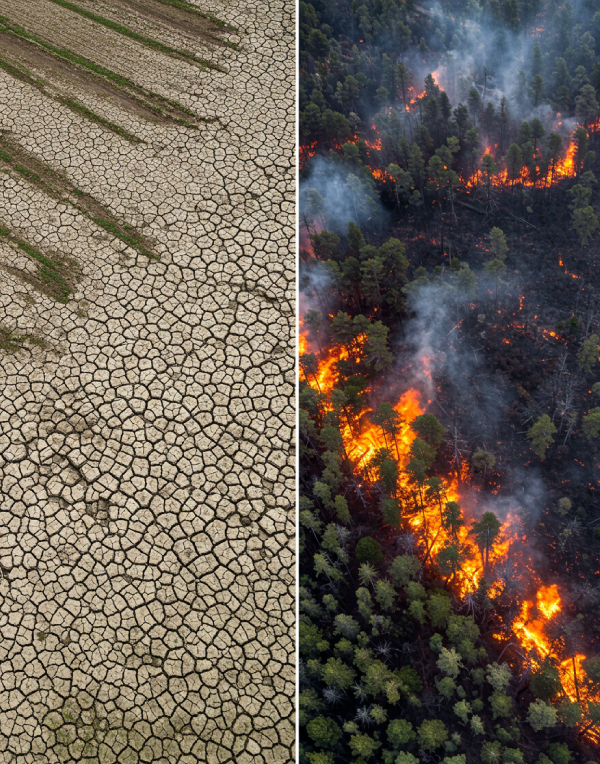Scroll Down ↓
Why Advanced Analytics & Satellite Scans Elevate Your Climate Strategy
- Precision in GHG Emissions
High-Resolution Data: Our platform ingests terabytes of satellite imagery to verify each facility’s actual footprint, energy usage patterns, and operational intensity.
GHG Protocol & ISO 14064 Aligned: Every insight is grounded in internationally recognized standards, ensuring your emissions inventory is accurate, consistent, and audit-ready. - Robust Climate Risk Projection
Multi-Hazard Modeling: We overlay your facility data with 25+ climate hazard forecasts, including hurricanes, storm surge, wildfires, and more, to pinpoint site-level vulnerabilities.
Future Scenarios: Our advanced predictive models project how each hazard may escalate over time, helping you plan for decades ahead rather than just the next quarter. - Actionable, Facility-Level Recommendations
Risk Mitigation Strategies: Identify the best approaches—like installing flood barriers, hardening critical infrastructure, or shifting logistics routes—to reduce climate risks.
GHG Reduction Roadmap: Our system highlights emission hotspots and provides targeted solutions, from energy efficiency upgrades to renewable energy adoption, tailored to your industry.


How the Process Works
- Satellite Data Integration
Image Analysis: We combine spectral imaging, thermal scans, and AI-driven object recognition to confirm each site’s layout and operational status.
Validation: Cross-referencing this imagery with your provided data allows us to identify any inconsistencies and refine assumptions (e.g., production levels, equipment usage). - Machine Learning-Driven Risk Assessment
Climate Modeling: Our algorithms incorporate historical climate patterns and future emission scenarios to predict how hazards (such as hurricanes and flooding) will evolve in your regions of operation.
Geospatial Mapping: We overlay these hazard projections onto your global footprint, detailing site-specific risk scores and potential cost implications. - Reporting & Recommendations
GHG Inventory Report: Receive a GHG Protocol- and ISO 14064-compliant report detailing your carbon footprint across all facilities.
Action Plan: We provide customized strategies for reducing emissions, mitigating climate threats, and enhancing long-term operational resilience.
Key Benefits of a Data-Driven Climate Risk and GHG Approach
- Increased Accuracy & Credibility
Satellite Verification: Independent data sources boost stakeholder confidence in your GHG emissions reporting and climate risk evaluations.
Standards Alignment: Compliance with GHG Protocol and ISO 14064 signals a commitment to transparent and accountable climate action. - Proactive Business Continuity
Future-Proofing: By planning around 25+ hazards, you protect supply chains, workforce safety, and corporate assets against tomorrow’s risks.
Investor Assurance: Demonstrate strong climate governance to attract and retain socially responsible investors. - Efficient Resource Allocation
Priority Focus: Pinpoint the sites and processes most vulnerable to climate risks—or those driving the highest emissions—and direct funding where it will have the greatest impact.
Cost Savings: Effective risk mitigation and emissions reduction often lead to lower insurance premiums, energy bills, and operational downtime.

Next Steps: Implementing Your Climate & GHG Roadmap
Once you’ve completed Step 3, you’ll have a comprehensive climate risk assessment paired with a precise GHG inventory. This lays the groundwork for ongoing monitoring, compliance, and improvement. Whether you need to refine corporate policies, prioritize sustainability investments, or report to regulators, your data is future-ready and internationally recognized.


